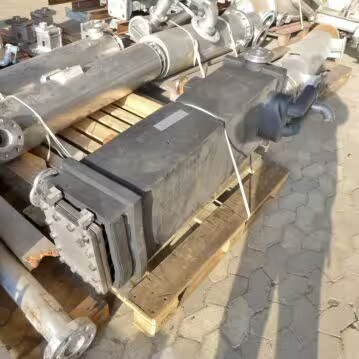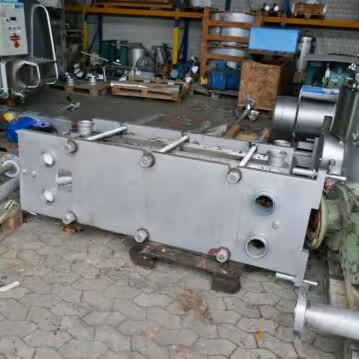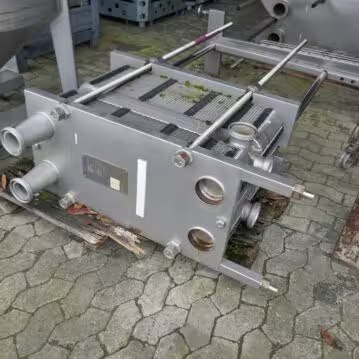Plate heat exchangers
Behälter KG offers high quality used plate heat exchangers - immediately available from stock. Plate heat exchangers enable efficient heat transfer in a space-saving design and a high degree of flexibility. Take a look at our inventory and contact us if you have any questions. read more...
Products
- exchange surface: 4 m²
- latest application: Pharmaceutical Chemistry
- insulation: available
- Insulation material: Armaflex
Price per piece, excl. VAT
2 pieces on stock
- latest application: Winery
Price per piece, excl. VAT
1 on Stock
- latest application: Winery
- year of construction: 2004
Price per piece, excl. VAT
1 on Stock
How does a plate heat exchanger function?
A plate heat exchanger enables heat to be transferred between two different media by exchanging energy via a large number of wave-shaped heat transfer plates in a confined space. This means, that unused thermal energy can be used sensibly for other processes in production. The parallel arrangement of the corrugated transfer plates creates fine channels through which the two media flow. The greater the number of plates installed, the greater the heat transfer area. The heat transfer plates are fixed between two solid frame plates through clamping screws in order to ensure the functioning of the plate heat exchanger.
What are the advantages and disadvantages of a plate heat exchanger?
A plate heat exchanger is significantly more compact in design than a tube bundle heat exchanger, when comparing them at a similar capacity. This results in smaller space requirement and a reduced unit weight. In addition, the performance of a plate heat exchanger can be modified later flexibly, by expanding or reducing the number of plates in the unit.
Due to the large number of sealing elements between the heat transfer plates, however, it can also lead to costly and time-consuming maintenance work if these must be replaced at some point. There may also be restrictions in the maximum operating temperature and in the transfer media, since these must be matched to the resistance of the sealing material.


